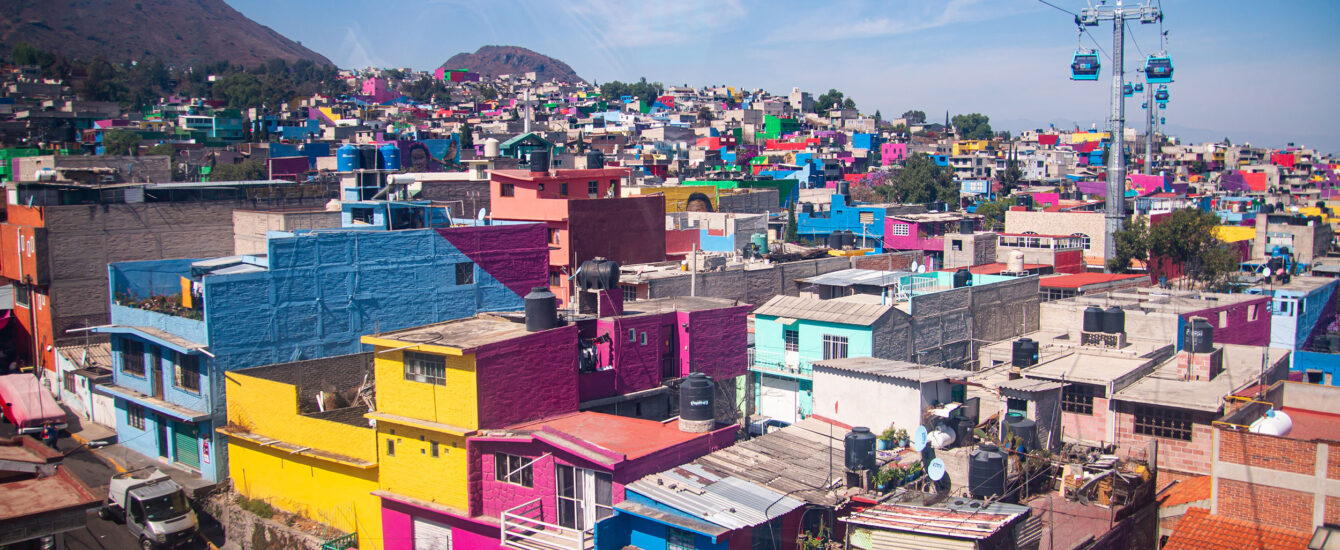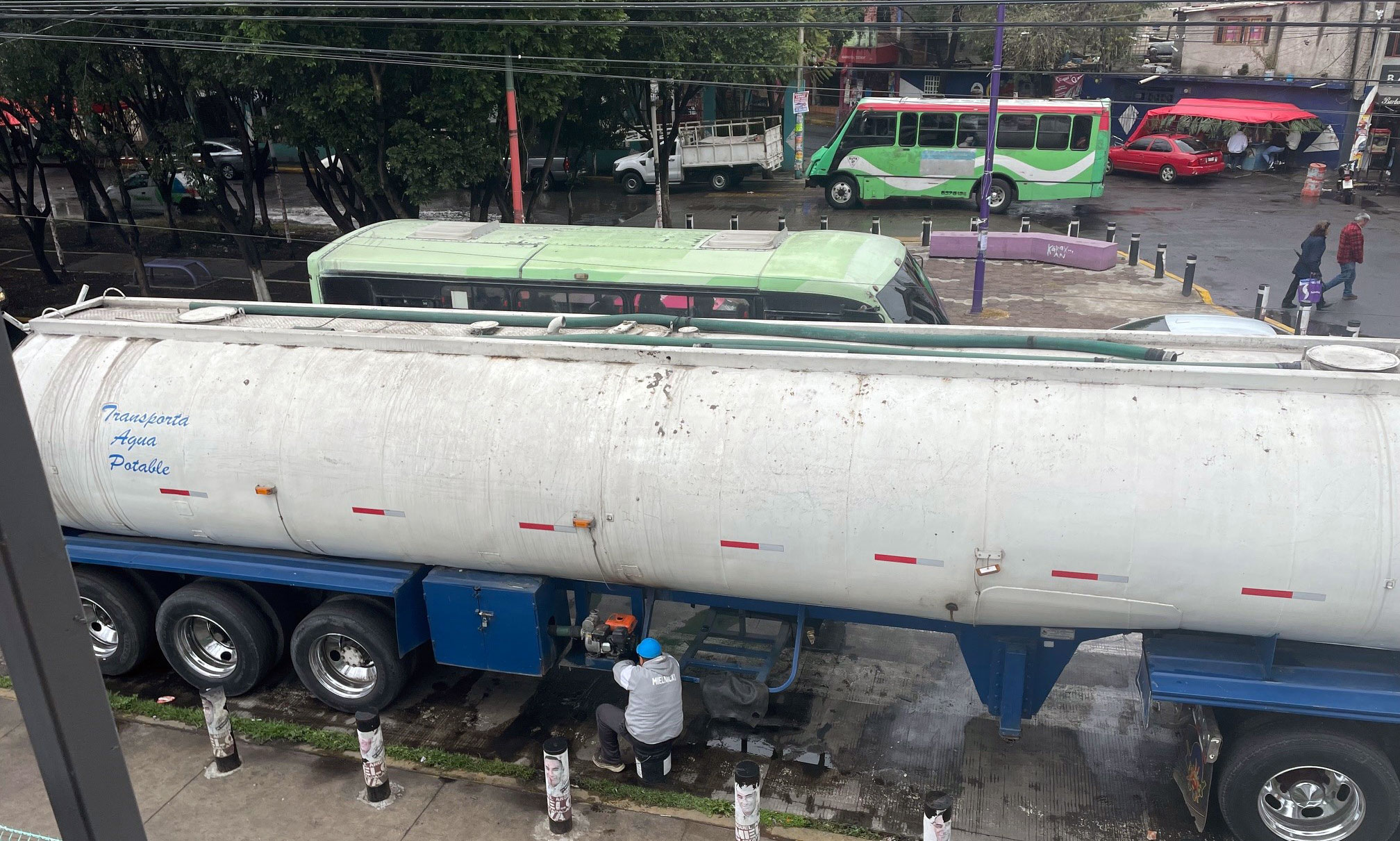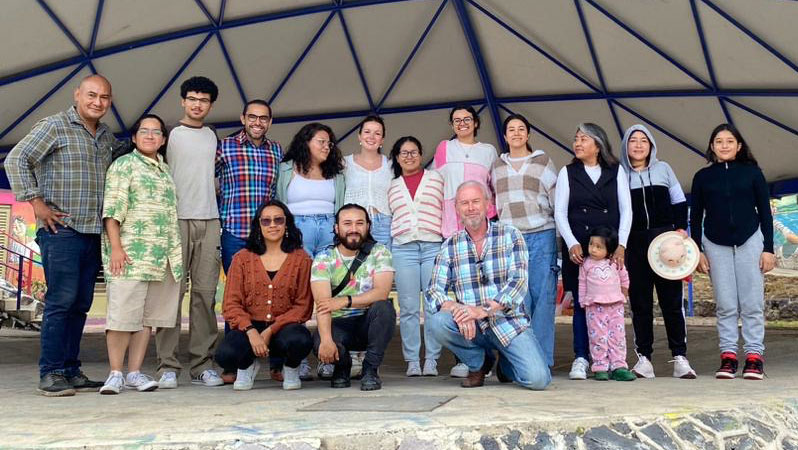The big thirst

With a decade-long drought, failing infrastructure, overdevelopment, and shrinking reservoirs that cannot serve a growing population, Mexico City is deep in the midst of a water crisis.
In the city’s eastern borough of Iztapalapa, water trucks rumble up and down the twisting, hilly streets. Over the years, this tightly packed, socioeconomically marginalized alcaldía of 2 million people has been hit hard by dwindling water supplies, and it’s only getting worse.
Residents’ taps run dry for days, even weeks. They rely on government-supplied water distributed by trucks. Often, the tankers arrive empty, or not at all.
Without city water, families reuse what’s left from washing laundry and dishes. Many spend one-fifth of their income on water, buying bottles or paying private companies for deliveries.
“I’ve been watching those tanker trucks for a long time, over many decades. They’re getting bigger and there’s way more of them on the streets,” says Tim Downs, a professor in the Department of Sustainability and Social Justice. “That’s an indication that more and more people don’t have water coming into their homes.”
An environmental scientist and engineer with expertise in aquifers and watershed stewardship, Downs is principal investigator of a four-year interdisciplinary, community-engaged research project focused on the Mexico-Lerma-Cutzamala Hydrological Region, which provides water to some 28 million people in 200 metropolitan communities in and around Mexico City.
“We’re studying this region because it’s an example of what’s wrong with ‘business-as-usual’ development. The Mexico City basin has been overexploited for 50 years,” he says. “This region is emblematic of the pressing environmental and social justice challenges that the world is facing under climate change.”

Funded by a $1.5 million grant from the National Science Foundation’s Partnerships for International Research and Education Program, the project involves a team of researchers from Clark’s Department of Sustainability and Social Justice, Graduate School of Geography, and Becker School of Design & Technology.
Eleven faculty and over a dozen graduate students are applying their expertise in geographic information science (GIS), climatology, sustainability, community development, engineering, environmental policy, and interactive media design to help Mexico City and the Central Mexico region emerge from its long, devastating thirst.
The project combines the tools of GIS — remote sensing/satellite data and digital maps — with system dynamics modeling, extended reality (XR) technology, and experiential educational experiences to help policymakers and the public understand the threats posed by climate change — both now and in the future — and how to mitigate them.
Day Zero in Mexico City’s water crisis
Since 2023, the researchers have been collecting data and, according to Downs, “co-creating knowledge-for-action” with community stakeholders, municipal and federal governments, and peers at the National Autonomous University of Mexico (UNAM).
Downs has spent several summers in Mexico connecting with the partners, at times being joined by other Clark researchers, including professors Yelena Ogneva-Himmelberger and Morgan Ruelle and doctoral student Ravi Hanumantha from the Department of Sustainability and Social Justice; Geography Professor Abby Frazier; and master’s students from Sustainability and Social Justice.
Last spring, as Downs prepared to head to Mexico once again, CNN, Scientific American, and other media were reporting that Mexico City might hit “Day Zero,” when taps would run dry, that June.
“In many ways, Mexico City is already in a Day Zero scenario,” he says. “It’s a matter of how extensive water scarcity becomes and how quickly.”
By drilling deeper for water, Mexico City has destabilized the ground, and is sinking into the compressible lake beds of the volcanic basin on which it sits, Downs says. Even with a vast aqueduct snaking through the region to supplement the water supply, the local groundwater is drying up. The city is pumping more and more from watersheds in the far west, with plans to triple such transfers by 2050. Valle de Bravo and other reservoirs tapped by the aqueduct are depleting rapidly.
Water scarcity impacts agriculture and food, aquatic ecosystems, human health and livelihoods, and the economy. These “impact cascades,” he says, are unevenly distributed across landscapes and populations, resulting in inequities and growing climate injustice, especially in marginalized areas like Iztapalapa.
Affluent neighborhoods “have much more secure access to water. But sooner than later, they are also going to be suffering water scarcity,” Downs says. “Will Mexico City’s extreme water scarcity increase? Yes. Unless we all work together to do something truly transformative.”

Clark connects with pilot communities and youth
The region is poised to become a model for sustainability, Downs believes, if policymakers, communities, businesses, and universities collaborate to visualize alternative climate and development scenarios to reshape their collective future and alter their fate.
This fall, he announced agreements with two communities that have joined the project, seeking to become models of sustainability: Miravalle in southeastern Iztapalapa, a municipality within Mexico City, and Valle de Bravo, a town west of the city. Surrounded by vacation homes in the state of Mexico, Valle de Bravo is a “bellwether town” in the water crisis, Downs says. It faces plummeting reservoir levels because of water transfers to Mexico City, high leakage (over 40 percent) due to aging pipes, and climate change impacts to the water cycle.
The pilot communities are involved in the collection, sharing, application, and archiving of data which, in turn, will be made available to them, he says.
“They are owning it, and they’re helping create it, to make it their resource,” Downs says. “These are their data, not our data. We help analyze and interpret them, in service of a brighter future.”
“We want youth to be front and center, and actively involved because they are the ones with most at stake. They deserve a brighter, sustainable, climate-responsive future.”
Each pilot community is launching a center for “climate change education, monitoring, research, and action,” he says. Clark and its partners have donated air- and water-quality sensors to enhance experiential, research-based learning for pre-K through higher education, as well as 3D printers so that community partners can create more weather stations and print mosquito traps to trap vectors that carry the dengue pathogen; dengue fever, is on the rise, driven by a warming climate. Meanwhile, environmental science and policy major María Salazar, M.S.’25, is creating a model to estimate just how much rainwater could be harvested by communities in the region, according to Downs.
Three M.S. students in environmental science and policy — Luke Trefry, Valeria Obregon Diaz, and Catalina Cuervo Maldonado — and a doctoral student in geography, Kwabena Antwi, who studies small-scale farming and climate change, will head to Mexico next spring to conduct research with the communities.
“Our goal is to use the project as a launch pad for co-creating long-term partnerships that offer unique learning opportunities for college students, from freshman year through graduate studies,” Downs says. “As a ‘liberal-arts-college-meets-research-university,’ Clark brings a singular synergy to this educational experience — it is a distinctive signature of our work, and energizes our motto, ‘Challenge Convention. Change our World.’ ”
Downs plans to connect young people in Miravalle and Valle de Bravo with those from Los Angeles and Worcester — specifically, youth from the Latino Education Institute (LEI), based at Worcester State University — to share stories about life under climate change, and hopeful visions of the future.
With guidance from Sustainability and Social Justice professors Nigel Brissett and Eman Lasheen, environmental science and policy major Josaphat Barcenas-Argueta, M.S. ’25, is partnering with LEI to help develop a curriculum for the students.
“We want youth to be front and center, and actively involved,” Downs says, “because they are the ones with most at stake. They deserve a brighter, sustainable, climate-responsive future.”
Study climate change
Explore our programs from the perspective of our students.




